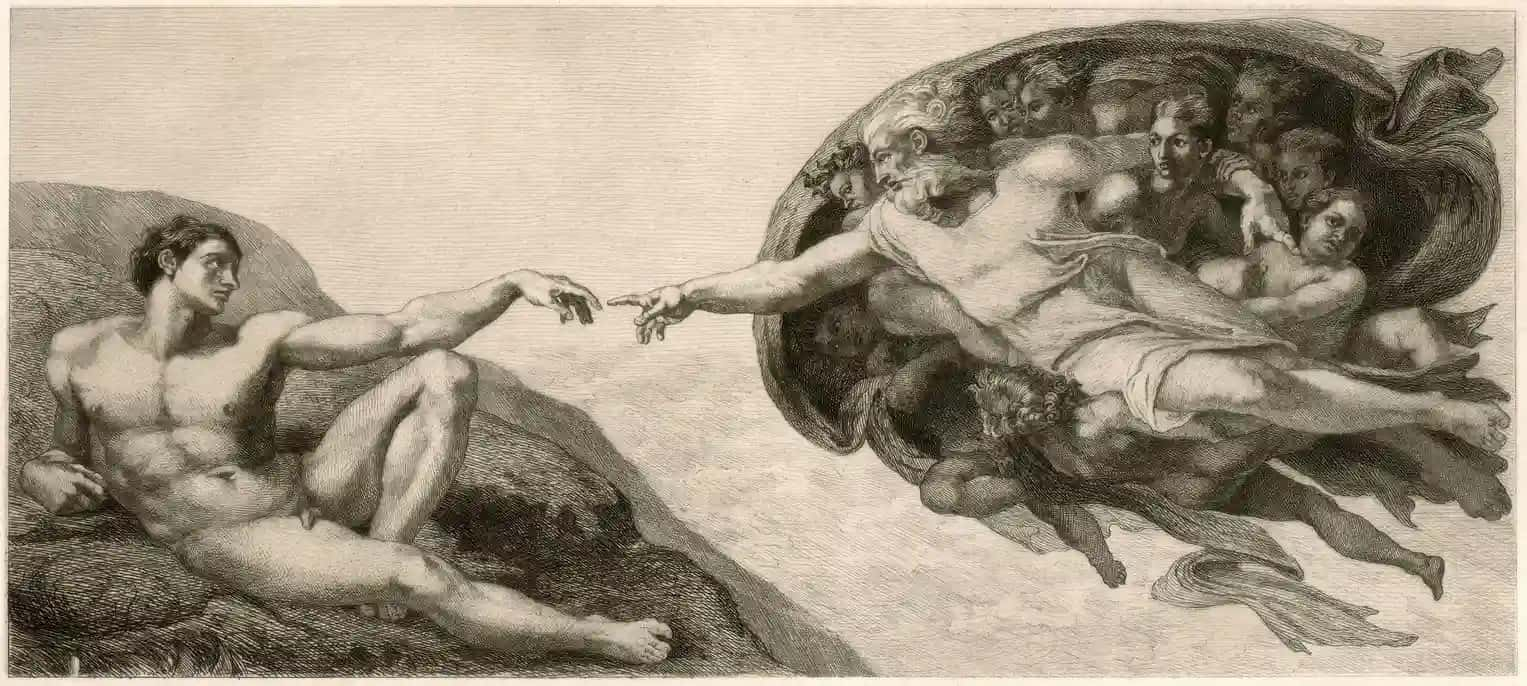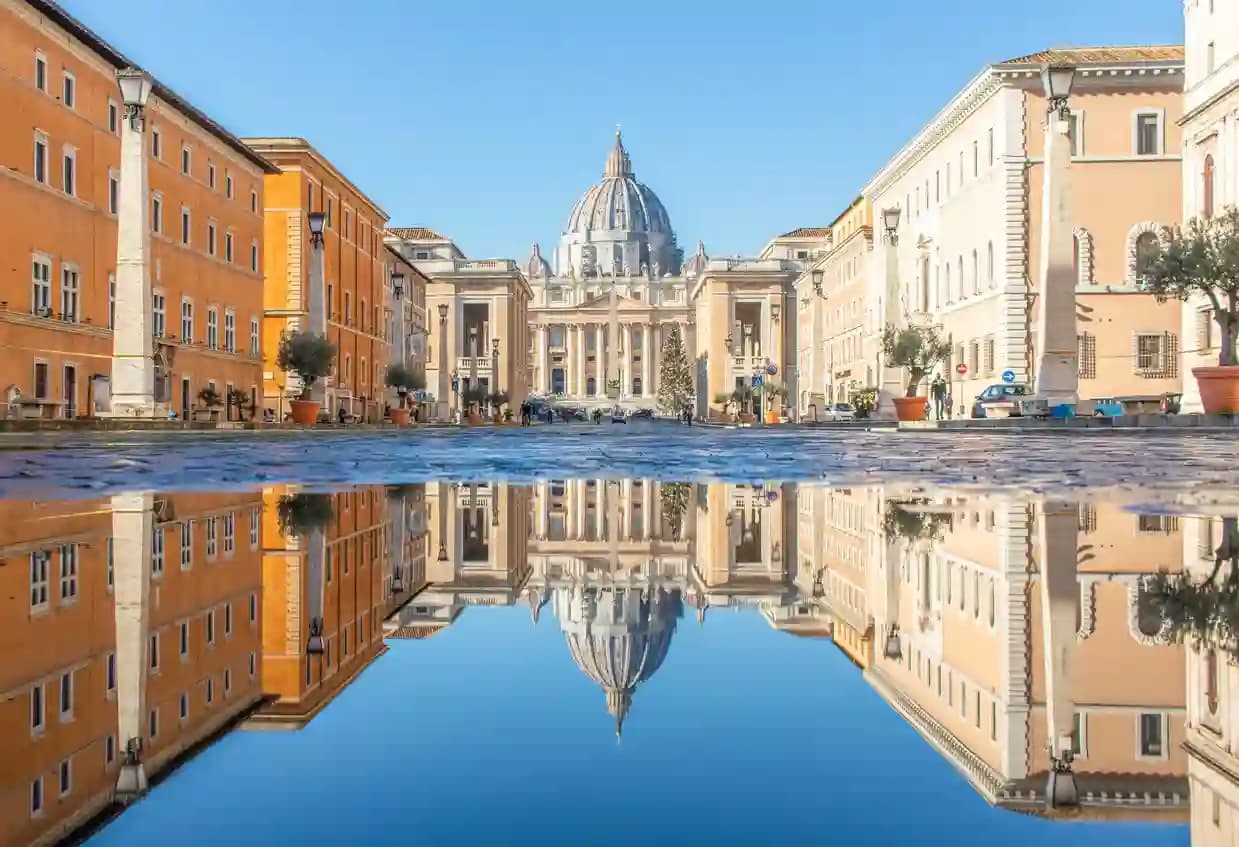
The Sistine Chapel
Historical Background of the Sistine Chapel
The Sistine Chapel owes its name to Pope Sixtus IV, who commissioned its construction in the late 15th century. The chapel was dedicated to the Assumption of Mary into Heaven and served as a private papal chapel and the venue for the Papal Conclave, the process by which a new pope is chosen.
The Sistine Chapel's history is intertwined with the evolution of the Renaissance, a period marked by a renewed interest in humanism, science, and the arts. The chapel became a canvas for some of the greatest artists of the time, including Botticelli, Ghirlandaio, and Perugino.
However, it was Michelangelo's sublime frescoes on the chapel's ceiling and altar wall that catapulted the Sistine Chapel to unprecedented heights of fame. These works transformed the chapel into a shrine of Renaissance art and an enduring symbol of the Church's spiritual and cultural authority.

The Artistic Genius behind the Sistine Chapel
The Sistine Chapel is a testament to the incredible talents of the artists who contributed to its beauty. However, one name stands out above the rest - Michelangelo Buonarroti. This extraordinary artist was commissioned by Pope Julius II in 1508 to paint the ceiling of the chapel, a task that took him four grueling years to complete.
Despite the physical strain, Michelangelo created a masterpiece that is widely considered one of the greatest feats of artistic genius. His frescoes depict scenes from the Book of Genesis, including the iconic 'Creation of Adam', where God and Adam reach out to each other with outstretched fingers.
Later, Michelangelo was commissioned once again to paint the 'Last Judgement' on the altar wall of the chapel. This powerful and complex composition showcases his remarkable ability to convey human emotion and narrative through art. The Sistine Chapel, adorned with Michelangelo's awe-inspiring frescoes, represents the pinnacle of Renaissance art.

The Stunning Architecture of the Sistine Chapel
The Sistine Chapel's architecture is as captivating as its frescoes. The building follows a simple rectangular design, reminiscent of the ancient Roman basilicas. However, its simplicity belies the grandeur within.
The chapel's exterior, though relatively unadorned, holds an imposing presence. Its tall, sturdy walls, punctuated by tall arched windows, evoke a sense of reverence. The interior, in contrast, is a riot of colors and forms. The vaulted ceiling, the wide nave, and the high altar create a breathtaking spectacle.
The most distinctive feature of the chapel's architecture is its ceiling. The curved vault, divided into compartments, serves as the canvas for Michelangelo's divine frescoes. The architectural design of the Sistine Chapel, while understated, provides the perfect stage for the dramatic artistry that unfolds within its walls.

Unveiling the Masterpieces of the Sistine Chapel
The Sistine Chapel houses a plethora of art masterpieces, each with its unique charm. The chapel's walls are adorned with frescoes by eminent artists of the Quattrocento period, such as Perugino, Botticelli, and Ghirlandaio. These works depict the life of Moses and Christ, creating a visual narrative of biblical history.
However, it is Michelangelo's frescoes on the ceiling and altar wall that are the chapel's crowning glory. His depiction of the 'Creation of Adam' and the 'Last Judgment' are considered some of the most influential artworks in Western art.
These masterpieces showcase Michelangelo's unparalleled ability to depict the human form and express profound emotional depth. His works in the Sistine Chapel continue to inspire and captivate audiences, asserting the enduring appeal of art as a conduit of human experience and emotion.

The Cultural Significance of the Sistine Chapel
The Sistine Chapel is not just a repository of art; it is a cultural landmark. It embodies the spirit of the Renaissance, a period characterized by intellectual curiosity, artistic innovation, and a renewed interest in classical antiquity.
The chapel's art and architecture reflect the values of humanism that defined the Renaissance. The human form is celebrated in its full glory, and biblical narratives are conveyed with a profound emotional depth. The chapel's frescoes, in particular, represent a shift from the stylized representations of the medieval period to a more realistic and human-centered approach in art.
Moreover, the Sistine Chapel holds immense religious significance as the seat of the Papal Conclave. It is here that cardinals from around the world gather to elect a new pope, making the chapel a symbol of the continuity of the Catholic Church's spiritual authority.

Interesting Facts about the Sistine Chapel
The Sistine Chapel, despite its fame, holds many intriguing secrets. For instance, Michelangelo was not initially enthusiastic about painting the chapel's ceiling. He considered himself a sculptor and was reluctant to take up the task. However, he accepted the commission and ended up creating one of the most celebrated artworks in history.
Another fascinating fact is that the chapel's ceiling was not painted flat but is a curved surface. Michelangelo had to develop unique techniques and tools to paint on this challenging canvas.
The 'Last Judgment,' Michelangelo's majestic fresco on the altar wall, created a stir due to its depiction of nude figures. The controversy led to a campaign of censorship known as the 'Fig-Leaf Campaign,' where offending parts of the painting were covered with painted drapery.

The Sistine Chapel's Impact on Modern Art
The Sistine Chapel has had a profound impact on the world of art. Michelangelo's frescoes, in particular, have inspired countless artists over the centuries. His depiction of the human form, his mastery of perspective and spatial illusion, and his ability to evoke emotion through art have all had a lasting influence on the development of Western art.
The chapel's ceiling and the 'Last Judgment' continue to be studied and admired for their technical brilliance and emotional depth. They serve as benchmarks of artistic excellence and sources of inspiration for artists and art enthusiasts alike.
The Sistine Chapel, with its magnificent art and architecture, continues to shape the discourse of art history, reminding us of the enduring power and relevance of art in human society.

Related Tours
How Excellent is Italy Trip Packages?
Italy Trip Packages is proud to be the best travel agency in Italy, according to our many positive reviews.
Frequently asked questions


